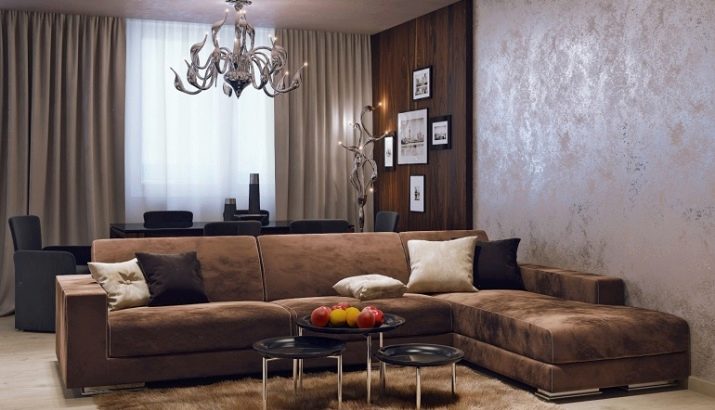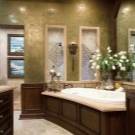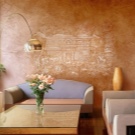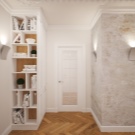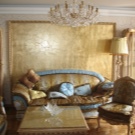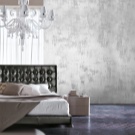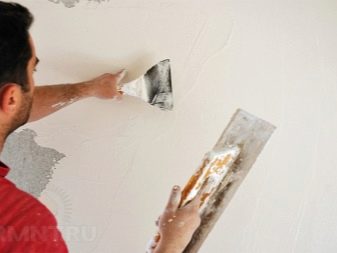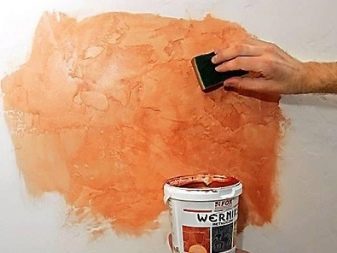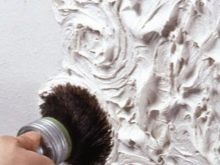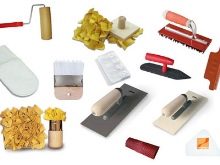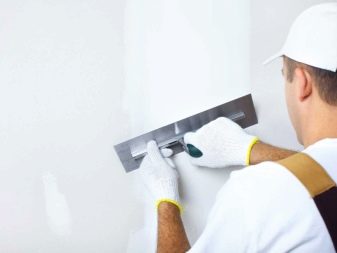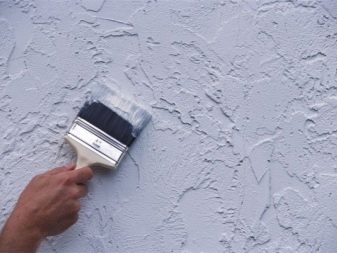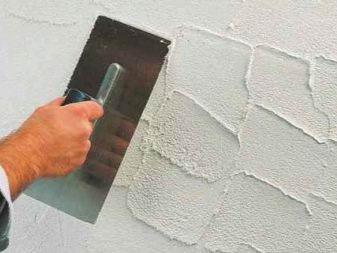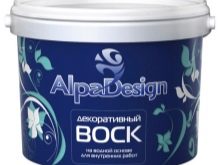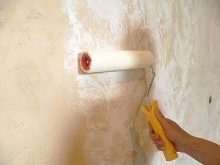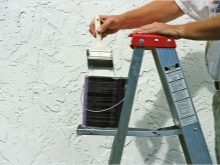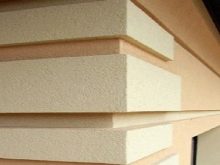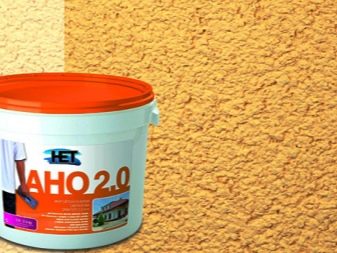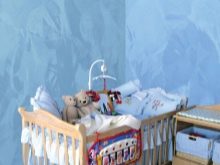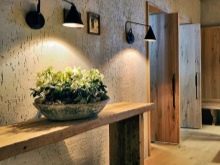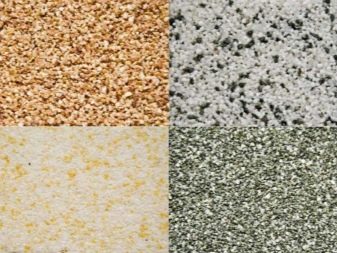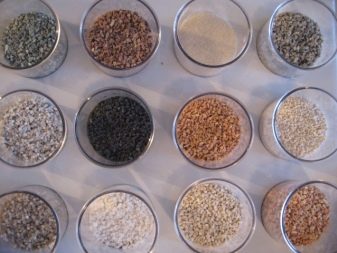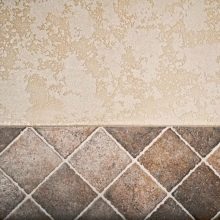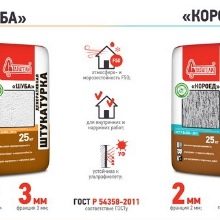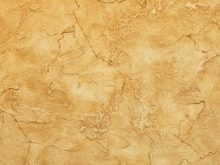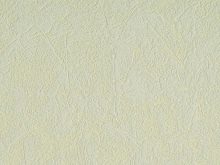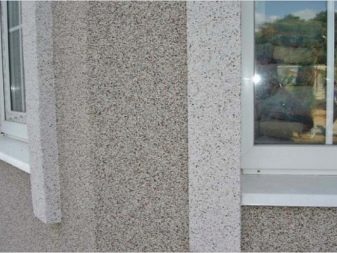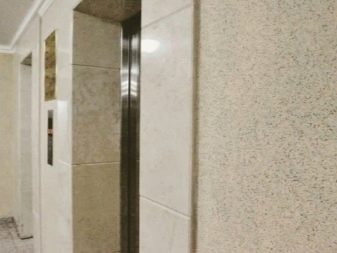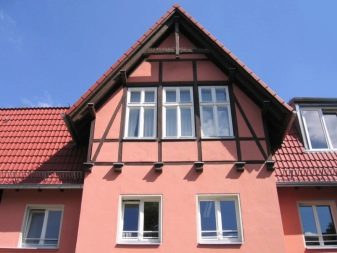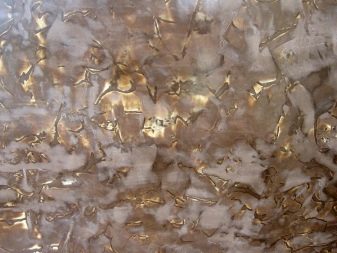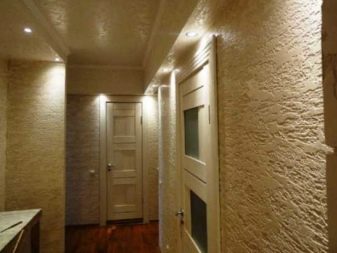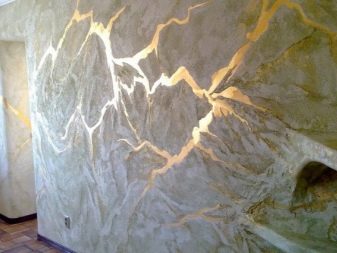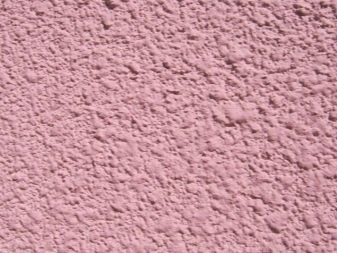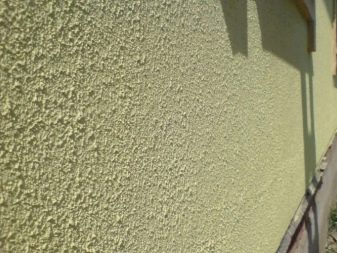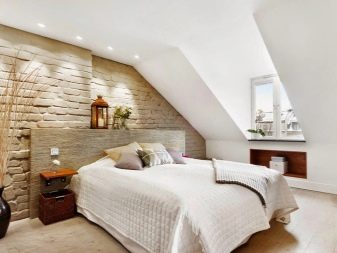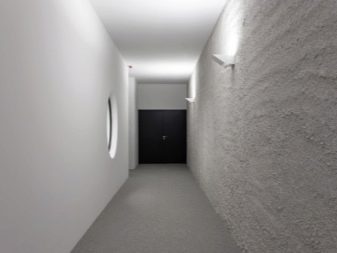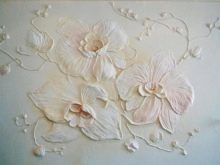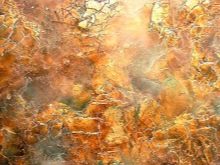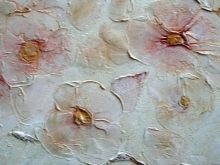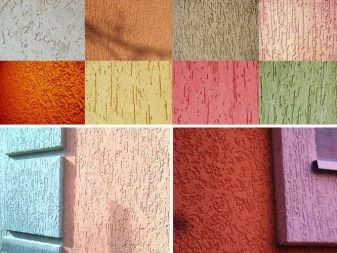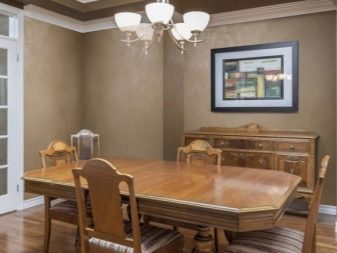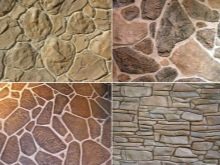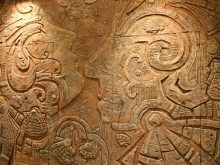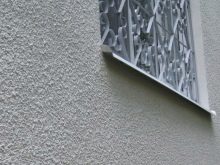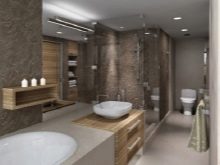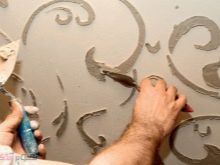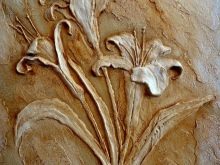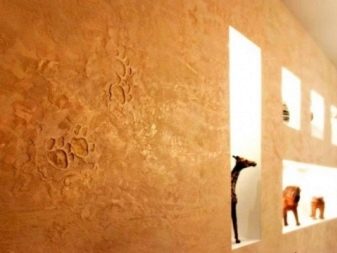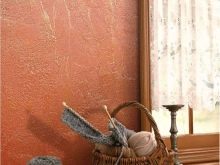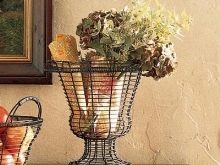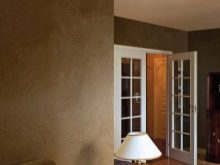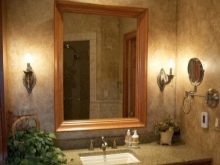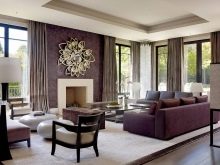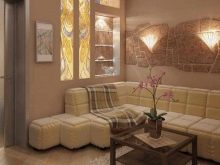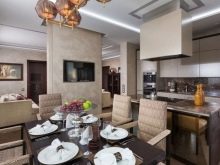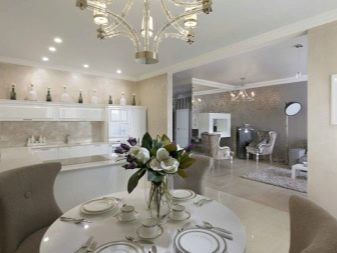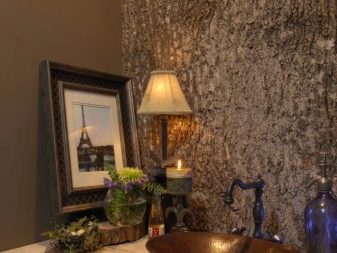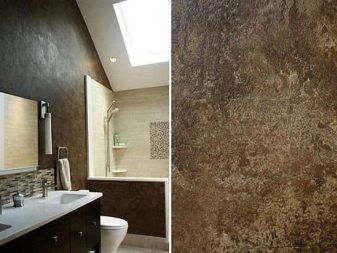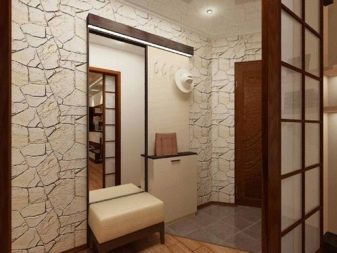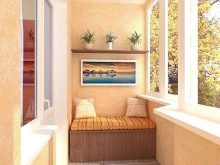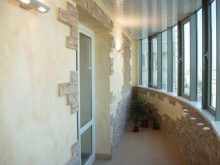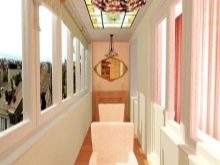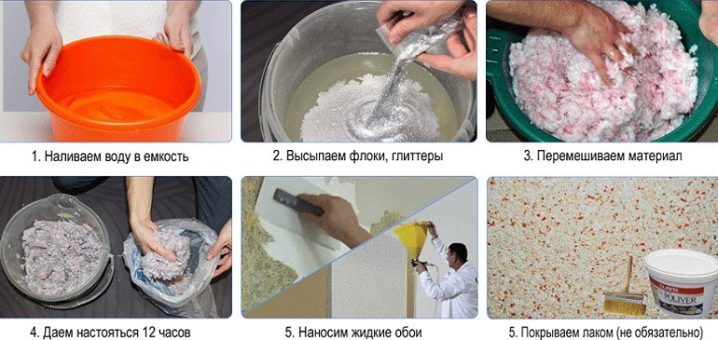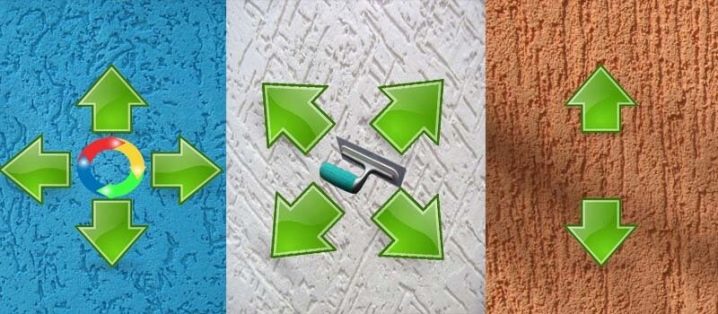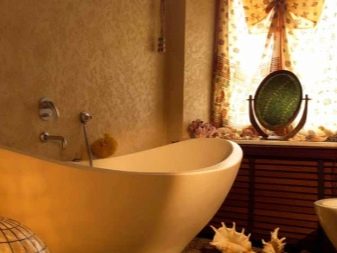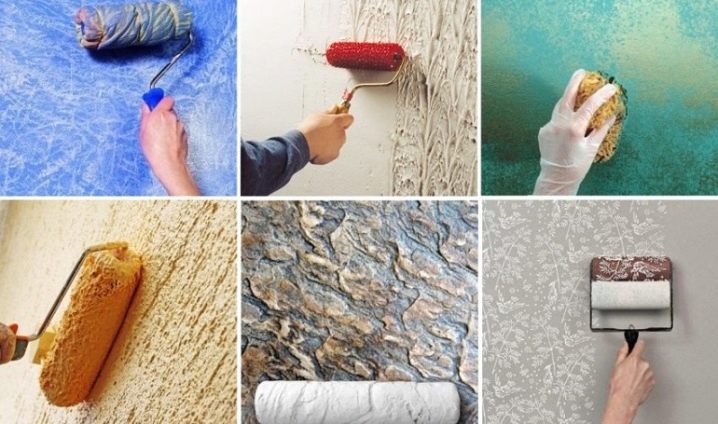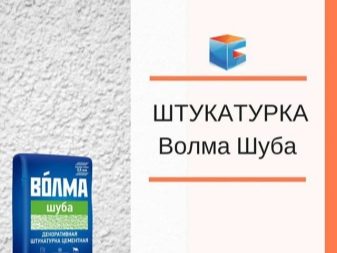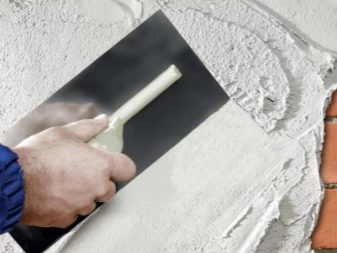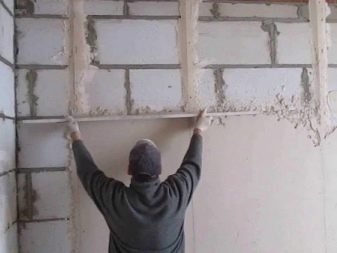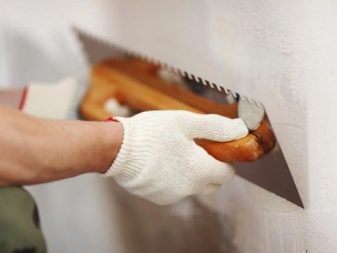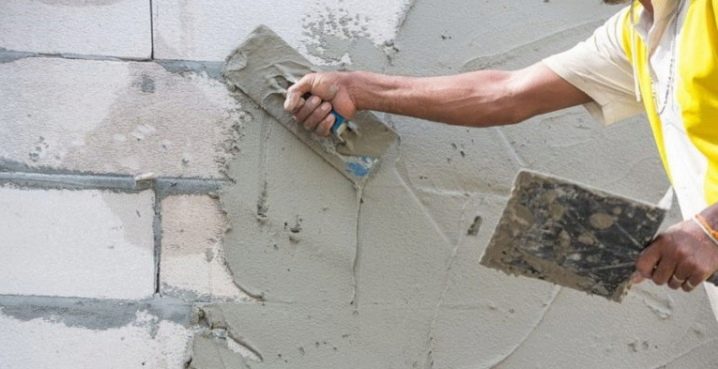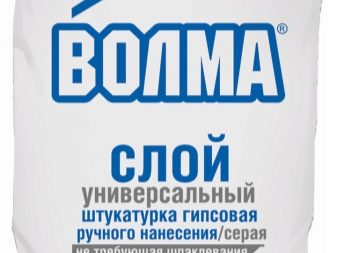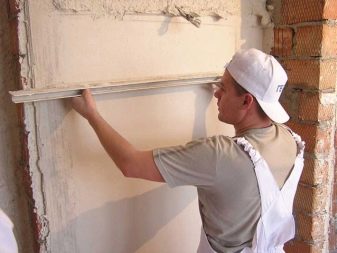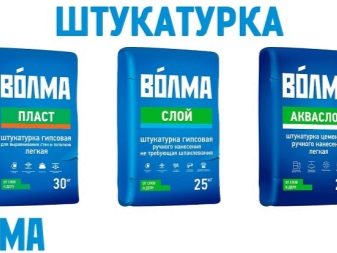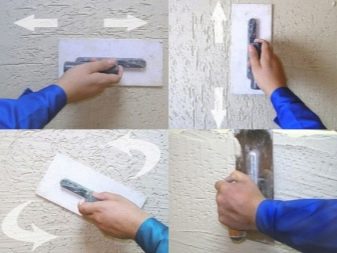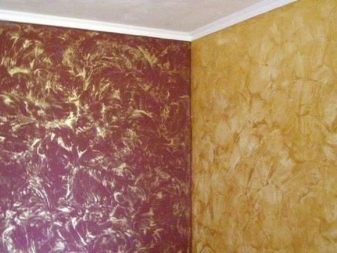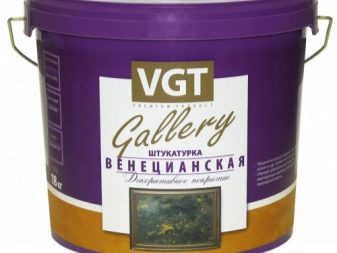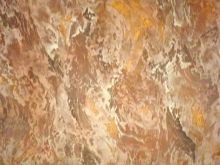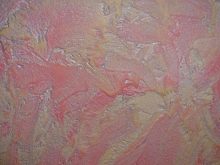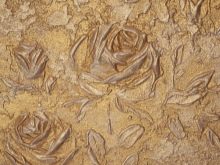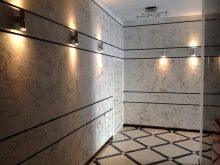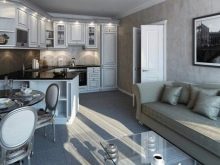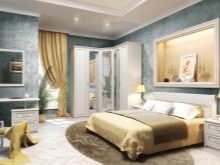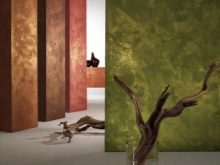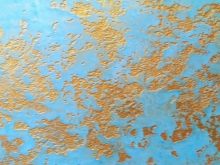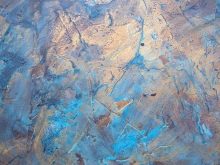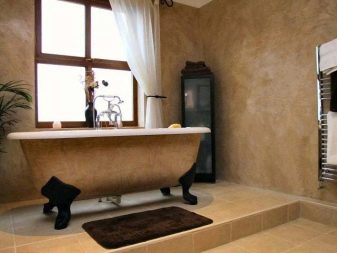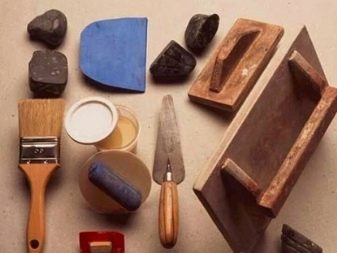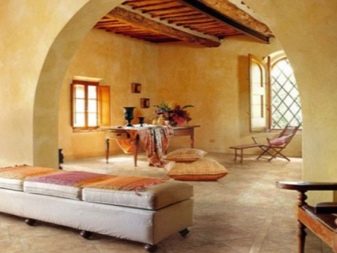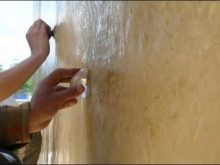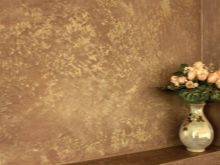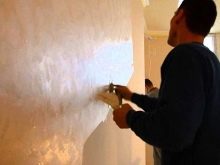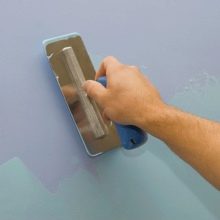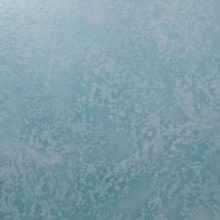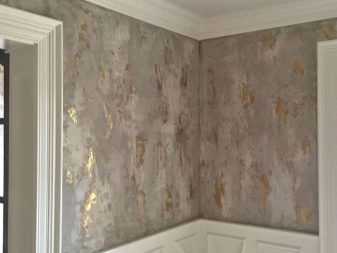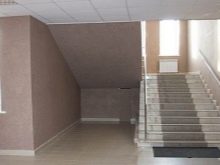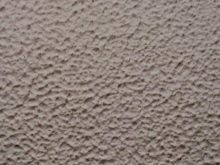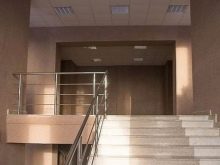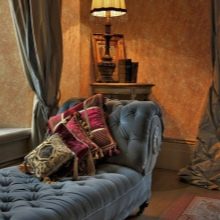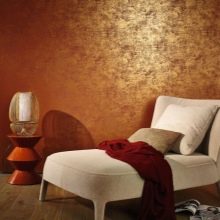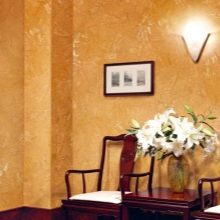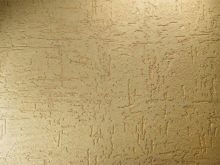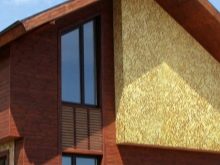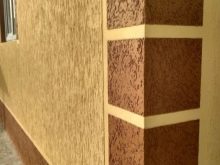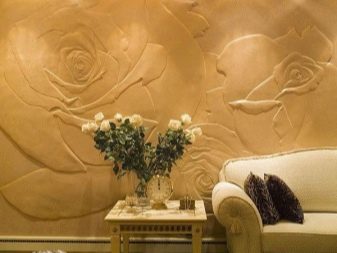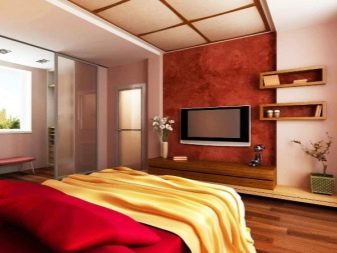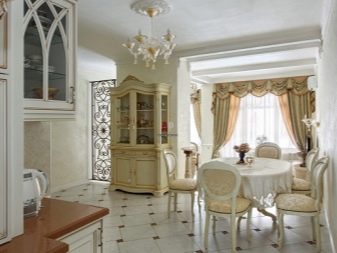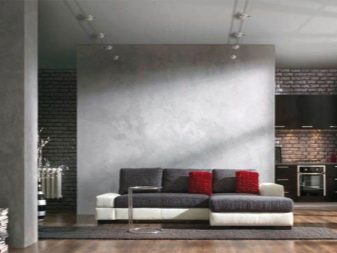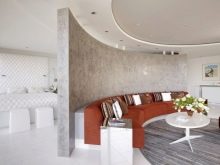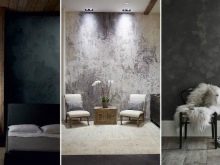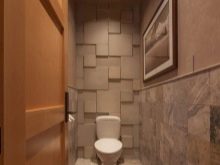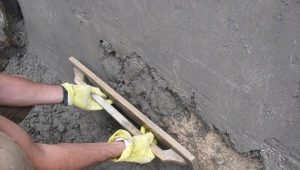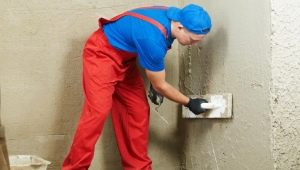Features of decorative plaster

When home repairs are planned, all households, first of all, think how to customize walls and ceilings outside the box and at the same time inexpensively. In place of the traditional whitewash came decorative plaster, which has a number of undeniable advantages.
Special features
Decorative plaster is not very difficult to prepare the composition, but even here there are a number of features. For example, in order to obtain a high-quality homogeneous mass, astringent compositions based on PVA and sometimes water are mixed in with the base and coloring pigments.
Cement, clay and gypsum compounds, as well as various minerals, usually act as the main active ingredients in plaster.If the material is made on a polymer base, the main tightening elements are silicate or acrylic resins, as well as various synthetic composite fillers.
To obtain a more dense composition that adheres well even to the most uneven and untreated walls, the base can be manually mixed with various natural components, for example, sawdust, solid mineral pieces, crushed shells, sand and stone particles.
To understand how much plaster will be needed for a large room, you can first buy one can and, using a practical method, determine the amount of material per 1 square meter. m. Accordingly, these calculations will help to choose the optimal amount of not only the basics, but also thickeners, solvents and other related products.
It is more difficult to calculate how much wax is needed if you want to add it as a finishing layer for shine. It is better to proceed on the basis of 70 g per 1 sq. M. m.
Do not think that, in addition to the mixture for plaster and one spatula, nothing else will have to buy more. The process of applying the composition to the surface only seems simple, but in fact many additional tools are involved in the technology to facilitate the process.
For plastering the whole apartment will need sets of spatulas, graters, trowels, brushes and rollers for different surfaces and hard-to-reach places. A big rule is also useful., to make it easier to smooth the surface, and the angle equalizer, coupled with a laser level.
As for the whitewash with putty, for the preparation of plaster is better to take a disposable waste plastic container to dilute the composition, as well as to prepare a drill with a special nozzle-mixer.
The process of plastering itself is quite simple and does not require special skills:
- First of all, it is necessary to prepare the wall for coating, that is, to remove all previous layers, degrease, clean, level and then prime.
- Mix the solution immediately before the start of repair, because the composition for plaster hardens quickly enough, so after dilution it is better to use the whole mass within 1-2 hours. If you are not sure that during this time you can perform the required amount of repair, you can mix the plaster in small portions for each wall separately.
- Direct application of the composition on the wall or ceiling.Here it is better to smear the plaster not at a right angle, but sharp (60 degrees), so that the mixture more evenly adheres to the surface, and not just spread in lumps.
- While the solution is not frozen on the wall, with the help of any items that have enough imagination (grater, crumpled plastic bags or even a hair comb), you need to quickly apply a pattern or a certain texture. If the master has artistic talent and special paints for painting on wet plaster, then you can try to make a fresco, as it was in the Gothic cathedrals or Venetian palazzo. If the paint is properly fixed with the top layer of varnish, such a picture may not fade and remain on the wall for decades.
- Before any additional manipulations with the plaster layer, it is necessary to let it dry for at least 6 hours (ideally, two days). The longer the plaster is in direct contact with oxygen, the more it is absorbed into the base of the soil, and the longer it will be pleasing to the eye.
- To give the desired color plaster, even decorative, sometimes it is necessary to paint additionally - this is best done with acrylic-based compounds.A layer of varnish or wax will not only give the surface a glossy shine, but also protect it from destruction.
- When fine-grained natural materials are added to the composition of the plaster, it is possible to improve the level of sound insulation in the room, as well as to increase the ability to resist high humidity and not to crack from sudden changes in temperature.
Advantages and disadvantages
Decorative plaster has several advantages over other types of wall coverings:
- Good adhesion. The material is endowed with the ability to mate with many surfaces, even rough - wood, concrete, aluminum.
- The ability to resist moisture absorption, but at the same time has good vapor permeability properties. That is, the plaster allows the wall to "breathe", but it does not hold water in itself and does not swell. This feature is useful when plastering rooms such as kitchens or technical buildings with steam installations. In such an environment, the likelihood of mold and mildew is reduced to a minimum.
- Without negative consequences, the plaster can absorb excess moisture, so surfaces such as the facade of the building or the kitchen worktop do not sweat.
- Some types of plaster, for example, acrylic, are immediately ready for application and do not require dilution with water or synthetic solvents. This allows the plaster to be more resilient and durable than similar types of mineral based coatings.
- If it is impossible to obtain solely by applying plaster of the desired shade, in harmony with the rest of the interior of the room, for walls or the ceiling, then this surface can be painted.
- Separate types of plaster are stored for a long time - up to a year. If the integrity of the sealed packaging is not violated, the material will not deteriorate for two years.
- Most types of decorative plaster are environmentally safe and hypoallergenic, do not emit toxic substances into the atmosphere even when heated, and therefore are suitable for application, including in the children's room.
- A high degree of aesthetics coating with a minimum number of stages of application. This coating is seamless, so no additional step of sealing joints is required. Separate layers of topcoat or primer are also optional.
- The ease of maintenance is confirmed by the fact that if the plastered wall is very dirty, it can be wiped not just with a damp cloth, but even with strong cleaning agents.
Among the minuses, it is worth noting the expensive cost of decorative plaster, especially the one that is capable of creating complex textures. The durability of the material will eventually pay for the final cost, especially if initially focusing on better manufacturers from Germany or France.
Separately should be highlighted popular in the repair of residential wallpaper under the plaster. They are easy to install and do not require a call a special team of masters. Such wallpaper will cost less than full plastering, because less material is needed on a paper surface than on a bare wall.
Special preparation and cleaning of the walls for this type of repair is not required., therefore, the construction waste at the exit remains less than from the powder plaster.
Criterias of choice
Depending on the composition of the plaster it is used for various types of premises and climatic conditions.
Here there are a number of laws:
- The price of the final product depends on the size of the grain inside the mixture. For example, pebble plaster with a silicone base is usually higher than a similar granular material, but on an acrylic base.Silicone better adheres to the surface and is more plastic when applied and cured - hence the difference in cost. It is also moisture resistant, therefore, it is used both for poorly heated areas of the house and for the external facades of the building.
- In addition to the acrylic component, potassium silicate, cement-lime polymer, as well as synthetic latex can be mixed in the base. The latter option is more durable and, accordingly, more expensive than cement or plaster composition.
- There are mixtures diluted with water, or water-dilutable, which are among the most budgetary options, but at the same time the weakest. The next type in the line of plasters, diluted with solvents, is organic solvent, which is a more expensive, but durable material. The most famous are samples of plasters "Fur" and "bark beetle". The most convenient and expensive - ready version of decorative plaster. It lays well on almost any surface, dries quickly and is completely absorbed into the soil.
- Plaster mixes on a lime basis, which are most often used for repairing closed or at least glazed balconies, are a separate category.For living rooms, they are also applicable, because after solidification there remains a beautiful texture, resembling natural rocks.
- Mineral plaster is very durable and washes well, but does not withstand low temperatures, so it is rarely used for unheated rooms or open loggias.
- The most environmentally safe are plaster compositions with the inclusion of plant fibers. Such a filler has not only heat-insulating properties, but also an increased resistance to excessive moisture, therefore, it is also suitable for balconies and summer lofts.
- Vinyl plaster allows you to achieve uniformity of the entire interior as a whole due to the smooth and seamless transitions from one surface to another. Due to its special strength and viscosity, they like to use vinyl both on the balcony and in the living room for the realization of bold design ideas.
When choosing plaster, the price is influenced not only by the composition or size of the grains in the mixture, but also by the fashionable color, the manufacturer and the specific store.
Kinds
Depending on the type of plaster coating, choose a material for a certain type of room:
- Silicone plaster It is considered the most reliable, though expensive, especially since you need to buy special primers for it. The cost of it is justified by a high elasticity, "breathing" surface and the ability to put on almost all known types of surfaces. Most silicone blends are sold in the form of a finished composition, which excludes the possibility of spoiling the entire jar, not respecting the proportions.
- Acrylic Plaster the basis is one of the most demanded at repair of premises. It is viscous and plastic, and also quite moisture-resistant due to the inclusion in the composite composition of acrylic resins. The disadvantages of acrylic can be attributed to its flammability, so it is better not to combine this plaster with easily flammable components such as mineral insulants.
- Mineral plaster It is considered the safest in environmental terms, because its composition includes natural minerals in the form of small crumbs in combination with quartz soil. The complexity of its preparation lies in the fact that in the basic configuration it is a white powder, in which it is necessary to add pigments of the desired color to obtain a tint.
- Silicate plaster many are confused with silicone, although in this case, the basis is extremely durable and heat-resistant silicate glass. Due to these characteristics, the material is often used for plastering facades of buildings. In addition, the silicate base hardens very quickly, so you need to work at a fast pace or knead the composition in small portions for application to a specific section of the wall.
It is difficult to do without professional skills, therefore it is better for beginning masters not to risk and not to overpay for silicate composition.
- Textured plaster differs in the type of filler that creates volume on the wall. As a grain, pebbles of natural or artificial origin, wood-based fibers or mica particles are used. A variety of patterns surface acquires with careful grouting of such plaster with a brush, roller or special stencil.
- Structural plaster externally similar to the textured version, and the grains inside are composed of natural materials such as quartz. Due to the homogeneity of the composition, the drawings on the wall are not as chaotic as when applying textured material.If you smear such a mixture with different forces in opposite directions, you can get interesting grooves of different sizes, simulating the surface of the moon.
- Venetian plaster got its name because of the noble brilliance and smooth surface. It is based on marble chips and several tint pigments. Overflows on the wall are pearlescent, if in a mixture of more than two coloring additives.
- Flock plaster creates the effect of "wet silk" on the surface and due to the use of sophisticated modern manufacturing techniques is quite expensive. Natural silk fibers are actually present in the mixture, so the surface after applying such plaster on the texture resembles a fabric coating, which is not very easy to clean, but at the same time extremely beautiful.
- Shagreen - This is a special decorative plaster, which is used more often as a finishing coat covering the irregularities that extend several millimeters from the wall. It is very durable, does not respond to mechanical shock, does not fade in the sun. After hardening, the surface becomes varnish and smooth, like colored glass, therefore it is difficult to write or scratch something on the plaster.Such features are good for finishing the facades of buildings, as well as common areas - stairwells or bathrooms, where a special load is placed on the walls.
Shagreen matches with almost any surface: concrete, brickwork, chipboard sheets, cement and asbestos blocks, as well as plywood. Plaster can cover the surface with the remnants of previous similar materials or oil paints, which allows not to waste time on complete cleaning of the wall.
The formed layer goes smoothly and without joints, if the shagreen is applied correctly - the mechanized method is usually applied: from corner to corner, without waiting for the previous layer to dry.
In order to avoid irregularities, masking tape is stuck on the already processed areas, and at the right moment it is simply removed, getting a seamless perfect coating.
Texture
The most common texture of plaster is considered to be smooth, because it is easy to apply and looks similar to ordinary whitewash, only with a longer service life. The smooth texture of different colors, most often of the same tone, is used for finishing public spaces, where the load on the walls and the likelihood of mechanical shocks are great.This composition is easiest to clean, because on a smooth surface a rag simply has nothing to catch on.
They like to use relief decorative plaster in the décor of residential premises, when they want to highlight one or another wall in contrast. Grooves and cracks are harder to wash, and the dust sits on them more often, but the surface looks much more spectacular.
Mixtures that create three-dimensional patterns and even paintings on the surface of walls are often used by professionals. The volume is quite difficult to mount even on ready-made stencils, because you need to know the exact ratio of the layer of plaster to the thickness of the surface so as not to overload the wall.
If you are still puzzled by the observance of the technology of layer-by-layer application, for example, of paintings from volumetric plaster, then you can embody even the most ambitious ideas in the interior.
Design
Decorative plaster can be inscribed in the design of almost any room due to the wide range of different textures and patterns that can create material.
There are several basic coatings, depending on the effect they form on the surface:
- "Bark Beetle" - this is a plaster with a texture imitating the grooves left in the wood after it has been eaten by the bark beetle.A similar effect is achieved by incorporating into the composition of marble fractions of various sizes, on which the depth of the grooves depends. The larger the stone crumb size, the more the result is similar to wood bark. If the material is distributed by translational movements of different strengths and directions, then other patterns can be obtained on the surface.
- Patinated plaster with imitation of an old wall made on the basis of latex polymers that can form natural cracks or craquelure. In places where individual particles are rubbed against each other, certain zones are lightened, as if on the surface of an old bedside table.
- "Graffiti" is a type of textured decorative plaster, creating a very similar to the real surface, as if from masonry. This effect can be achieved only with the help of a uniform mechanized application of the mixture using an automatic spray gun. It is not difficult to work with him, so the effect of "graffito" can be created with self-repair.
- "Sgraffito" slightly different from the previous version of plaster.She can create not only the imitation of stonework, but also many other embossed patterns. The unique design is obtained during the application through the special stencils of several layers of plaster of different shades one after another.
- "Fur coat" - this is a plaster with the effect of small frequent villi, like in the famous winter cover. They achieve such a rough texture by spraying small drops of the composition, for example, with a broom.
- Plaster called "Terrazit" imitates natural rocks that masters especially like to use when finishing the facades of buildings. The material is quite difficult to apply, requires professional skills. Since the layer of plaster turns out to be quite heavy and bulky, it is better not to use it for interior decoration.
- Highlight decorative plaster to create three-dimensional drawings., for example, roses, where the petals are obtained as a result of applying the material through a crumpled plastic bag along the stencil lines printed on the wall beforehand. Most often, the pictures are placed on the white background of the plaster base, and only then the individual protruding parts are additionally painted in the right shade to give a naturalness to the flower.
Patterns can be scratched on black plaster applied over white, and then a “shadow theater” is obtained.
Styles
In the room, a different atmosphere is achieved, including through the special stylistics of decorative plaster on the walls and ceiling:
- Structural plaster called "Marciniad" is especially popular for the repair of bedrooms and children's rooms to create a pacifying mood by imitating the cold surface of a distant planet. For building facades, this technique is also used. The composition of the mixture here can be any, for example, often used structural plaster "Desan Versailles." The drawing is formed by a special mashing technique, which can be found on the Internet or after an invitation to the designer’s house.
- Previously, Provence style was more loved by the owners of country houses, and now it can often be found in small rooms of high-rise buildings. The secret to the success of this decoration is the noble combination of rural motifs and elegant luxury. White aged furniture and simple whitewashed walls are skillfully combined with individual luxuries.
As for decorative plaster, this style involves rough textured mixtures applied with a thin layer on concrete slabs or brickwork. This is done in such a way that the shapes of the base material stand out on the surface of the wall. Colors usually choose pastel and muted.: beige, ivory, milky, and not white, eye-cutting. With the help of rollers and special graters, you can age the surface of the walls in the manner of a noble estate.
Often Provence style complement the light paintings on the walls.depicting landscapes of the same countryside. Imitation of paintings on the wall can be done independently with structural plaster of different shades, applied in layers.
The plaster can be absolutely smooth and look like a simple whitewash, so that the design looks authentic, but at the same time the walls retain their original appearance for much longer.
Application area
The bedroom, living room or nursery can be decorated with almost any kind of plaster, intended, including for interior decoration. The microclimate here is favorable, there are no sharp temperature changes, as well as accumulation of moisture. In the nursery, it is better not to be zealous with the original textures of plasterAfter all, babies can get hurt by an uneven furrow if the wall is decorated, for example, with bark beetle plaster. Also in the process of games, plastered surfaces will be subject to frequent mechanical shocks, and the more plaster is exposed on the surface, the more likely it is that the pieces will fall off.
The ceiling in this case is also better to plaster without excesses., because of the increased vibrations, when the room is constantly running around, heavy decor can partially crumble. It is better to give vent to fantasy in the manufacture of patterns using plaster "graffiti" and similarto create a fabulous atmosphere. Let the pictures be above the height of the child, so they last longer intact.
For those who want to slightly increase the space there are plasters with a glossy surface, when due to numerous reflections the room becomes visually wider.
You can shine with waxused as a finishing coat. Shades are best made dimmed, so that the walls give a relaxing effect to the room.Contrasts can be added to individual pieces of curly trim.
For example, in a hall where family members are mostly awake, one wall can be made in a contrasting color, and on the other three you can hang pictures or a TV. If a fireplace is installed in the living room, then they often try to choose decorative plaster to match the fireplace frame. If it is made in the form of stonework, then the graffitto plaster is perfect.creating the same effect. Plaster with the addition of clinker bricks are often offered by renowned interior designers, as an example of a successful framing of a fireplace portal or wall-TV plasma.
In apartments, where the kitchen is combined with the living room or the living room with a hallway, it is customary to transform the two rooms into one large room with the help of a single design with the same plaster. The main thing is not to forget that the kitchen is subject to increased formation of moisture and steam, therefore in it, as in the living room combined with itit is better to use materials with a hydrophobic effect.
There is another problem with the hallway - a large number of people pass through it and people constantly touch the walls with their clothes or the same bicycle.That is why for rooms subject to frequent mechanical damage used plaster of increased strength - such, for example, "shagreen" or "fur coat".
The bathroom has traditionally used special types of plaster, suitable for continuous interaction with water and steam, as well as with high temperature. For example, mixtures of the brand "Rotband" specialize just on the premises with a similar microclimate, that is, it prevents the absorption of moisture, as well as the appearance of fungus.
Compared to the counterparts, this manufacturer is not the most expensive, so it can be taken for the kitchen, where the environment is not so aggressive for the surface of the walls.
Plaster with sanitizing effect can be used even in public showers, where the load on the walls is extremely high. This material creates a very good waterproofing and adheres tightly to the ground, even without using a reinforcing mesh.
The composition is absolutely harmless in environmental terms, and in terms of durability it is not inferior to tile popular in bathrooms.
Depending on the region of residence and the climate of the territory, sometimes the hallway is referred to as rooms with high humidity, if it rains or snows for most of the year.Residents of the apartment in this situation often splash liquid dirt on the walls, so a protective layer of water-repellent plaster does not hurt here.
To protect the walls from the vagaries of nature, as well as from mechanical stress, sometimes plaster with the technology of "bark beetle" is applied in the hallways, although it is usually used for cladding exterior facades of buildings. If you correctly place the color accents and correctly fulfill the proportions when creating the mixture, this option can create a quite cozy atmosphere in the room.
A separate story is a balcony, because here with the help of decorative plaster you can create a special small world with any texture on the walls and on the ceiling.
The main thing is not to forget that the balcony is often open and is exposed to the same aggressive influence of the environment as the outer wall of the house. It is better to choose moisture resistant plaster with a sanitizing effect.
Tips and tricks
Putting decorative plaster on the surface of the walls and ceiling is an easy process, if you follow the basic instructions with the same can of plaster mix.
There are a number of lifehacks and recommendations from people who have already completed repairs,and if you follow these simple notions, you can save money and plaster everything quite qualitatively:
- When applying flock plaster with the effect of silk fabric, you need to pay attention to the observance of all stages of repair, so that the material lies on the wall correctly. First, the glue base is applied, it is allowed to dry slightly (20 minutes). Next plaster the wall directly flock, giving it time to dry (not less than a day). The last layer - fixing varnish, which can be applied several times. If you follow this simple algorithm, the plaster will fall without any rough edges and joints, and will also be durable and wear-resistant.
When there is an addition of coloring pigments to the plaster base, it is better to mix two colors instead of one - as a result, decorative cracks will overflow with different shades and differ from the base, creating a cosmic atmosphere.
- It is more expedient to apply the textured bark beetroot using such improvised means as a trowel and a sponge slightly moistened with water. If it is harder to press a crumpled sponge into a still dry plaster, the furrows will be unconventional for the Bark Beetle, and small pores with the effect of patinated aged walls.
- The surface will play in the new light when trying to double-apply plaster of different colors. The starting layer is used in dark colors and is applied with a soft, usually fur coat. From above they overlap this with an even lighter tone of plaster, while using hard tools (rules or grouting) to make the light layer better adhere to the surface. Contrasting colors flowing through will create truly fantastic patterns of designer finds on the walls in natural daylight.
- It is not always possible to easily choose a roller in the store to create exactly the texture of plaster, which was conceived by the designer. In such cases, the roller is made independently, using the old version and adding new parts to it. For example, a thick rope is wound from above and interesting elongated grooves are obtained. The foam rubber roller can be simply cut in its soft part in the manner of application by selecting the desired pattern. A piece of soft fabric such as flock, velor or velvet is rewound with a filament cord, getting blotches according to the “Marsiniad” pattern.
You can also use the old rolling pin as a base for an improvised roller, wrapping it with rubber or even metal patches with an unusual texture.
Manufacturers
There are many different names and manufacturers of decorative plaster on the shelves of construction stores. In order not to get confused and select the desired material in terms of price-quality ratio, it is better to inquire in advance about some brands.
Volma
In recent years, this brand has become very popular among Russian consumers, which is affordable and economical. This plaster is an alternative option for wall cladding with drywall that has less visual aesthetics. Due to its polymer composition based on gypsum, the mixture adheres well to almost all known surfaces, even without requiring special preparation of the walls and ceiling.
Although the instructions indicate that the surface can not touch and plaster as it is, it is better to clean the wall and degrease the wall without using a primer.
Polymer additives also affected the increased strength, resistance to mechanical failure and durability. Among the advantages, Volma also notes good resistance to high levels of humidity and vapor permeability. This plaster is very easy to apply even to an inexperienced person, because thanks to modern plasticizers in the composition it lays down smoothly and evenly.
Even on an uneven wall, the plaster can be put in one thick layer of about 5 cm and then not puttied, since it will still hold well. The mixture used for walls and ceilings does not shrink so much that the material consumption will be minimal.
The composition of Volma is ecologically safe, because natural substances are used to create it. It is because of the lack of a large number of synthetic composites that the scope of application of plaster is not so wide.
The mixture is best applied indoors with a room temperature of not more than 30 ° C and without sudden weather changes. For the facades of buildings and technical structures, "Volma" for this reason is not suitable. Also of the minuses can be noted quite a long drying - the full cycle takes about a week. The plaster grabs at the same time instantly and is not recommended to be kept in a diluted form for more than half an hour, although a period of 45 minutes is indicated on the box before solidification.
If the master is not sure that he will have time to plaster the entire room during this time, then it is better to mix the composition in small portions and cover the area after the section. This method of applying more labor-intensive, but you can not be afraid to spoil the entire composition at once.
Volma plaster, applied with a thin layer to the surface, "breathes", so that the air in the room is always fresh. Despite this moisture resistance, the material still absorbs some of the water, so it is better not to use it outside, especially in regions with constant rain.
More often, “Volma” is taken for minor repairs and plastering of damaged areas of the already applied coating.. Sometimes this plaster helps to level the surface to create an invoice with the next layer. It is rather viscous and plastic, so it is convenient for it to also model various designs on the surface of walls and ceilings: arches, stucco elements and even simple sculptures. Masters like to apply such plaster as a finishing layer.because it forms a beautiful glossy film on the surface.
The process of applying decorative plaster "Volma" is not considered to be difficult, because it requires a minimum preliminary surface preparation. If after the removal of dirt and debris particles, obvious irregularities are visible, they can be cut off and covered with a putty. When the walls are frankly uneven, it is better to install traditional lighthouses-profiles and measure the layer of plaster on them.
After applying the first layer, wait two hours until the mixture seizes, and cut off the excess to create a smooth surface. The final stage is the process of glossing with a metal float, since the application of varnish or putty is not necessary here.
Decorative VGT plaster
Famous for its ability to create unique textured patterns and designs. It originates from the old Venetian plaster, which trimmed the rich house. This composition is used for exterior work and for decoration of living rooms.
Along with synthetic polymers, the natural mixtures on the basis of crushed marble chips are included in the plaster mix. It is thanks to the last ingredient that a smooth surface with a noble shine is formed in VGT.
The plaster is delivered in a paste-like form, which contributes to good indicators on the leveling of the walls, hiding roughness and cracks. They also take pasta to create embossed elements on the surface - patterns and even similarity of paintings.. All these crafts will be resistant to moisture and low temperature, so hold out for quite some time.
It is extremely easy to care for the walls with such plaster - they can be cleaned with a normal damp cloth or with active detergents.Also, the material does not absorb odors, which allows it to be used in the kitchen or in the restaurant.
Because of the marble chips in the composition of the master love to decorate the fireplace portals and the space around them in country houses with this particular plaster. The composition of the VGT successfully imitates the texture of natural stone, but at the same time it is several times cheaper.
In combination with a variety of colors, they like to use it for the most daring design ideas both in residential premises and in conceptual art spaces.
Moroccan decorative plaster
It has long been used to decorate walls in wealthy homes due to its amazing external effect. Previously, in Morocco, she was plastered not only the walls, but also made dishes from it. It speaks of its environmental safety and harmlessness in everyday life, because it consists of only natural ingredients.
Previously, Moroccan plaster was called tadelakt and consisted of quartz sand, clay, alkaline impurities and ash. Now, in addition to the above ingredients, manufacturers add there cellulose compounds, hydraulic lime, as well as marble chips, ground into a flour composition.
If the choice falls on the colored plaster, then in this case you can be sure that the natural dye pigments will be included here: ocher, umber or henna. The combination of these components gives the Moroccan plaster special strength and durability, so it can be applied both in living rooms and on the facades of buildings.
Thanks to the marble crumb, this composition is not afraid of minor scratches and other mechanical damage. Even under the influence of an aggressive environment and under frequent rains, the color of the coating does not tarnish or erode, and the wall does not crack. With water and active cleaning agents, this plaster also does not scare, however, like dust, so often do not have to wash the walls.
In expensive hotels and SPA centers are often even floors and sinks in the bathroom are finished with this material, because the plaster has a high resistance to moisture. Now designers also use this technique when designing projects for private houses, offering their customers a worthy alternative to the already annoying tile. Also, Moroccan plaster can withstand high temperatures well, so they like to use it when laying fireplaces, of course, not the part where the chimney is located, but it will fully withstand the fireplace portal.
The main advantage of this composition is its appearance, giving a noble look of the eastern palace to even a small room. The walls with gold and silver splashes are pleasant to the touch and have all the winning properties of marble. For example, in cold weather, the plaster will retain heat, and in hot months, on the contrary, to give coolness in the room.
To make the gold impregnations more noticeable, a special wax-based compound is used at the last stage of application, which is able to imitate the golden reflections.
Since Moroccan plaster is quite expensive compared to the same plaster or cement option, it is worthwhile to assess in advance your professional capabilities and the functional purpose of the repaired premises. If the walls of the room are thin and not carrying, then you should not cover them with a thick layer of rather heavy plasterbearing on the struts palpable load.
Yes and the preparation of the walls for this composition should be serious, similar to the preparation for sticking wallpaper. The materials applied to the base before the Moroccan plaster must also be natural and high-quality, otherwise the upper layer will begin to flake off from the incompatibility of the compositions.
Also, the situation may be problematic if, through ignorance, put a primer with Moroccan plaster, which is not possible.
Having familiarized in advance with the technology of applying such plaster, it is possible to divide the whole complex of works into three stages. First, the plaster itself is applied on the thoroughly cleaned surface in layers. Each layer dries in about half a day.so you need patience and three days to repair the walls.
The first layer is left unchanged, and the next two are preferred to be polished. The third application, most often finishing, is sometimes left smooth or with the help of special grouting they make the surface embossed. To give the wall the effect of a glowing gold coating, you can buy a special wax, thanks to which the moisture resistance of Moroccan plaster will increase.
Italian plaster
It has functions similar to the Moroccan version, that is, in addition to strength, it creates the visual effect of a beautiful palace. In addition to the noble pastel color of the walls, this material contains inclusions of ocher in the form of grooves and cracks.The Italian version of decorative plaster is more picky in handling, and it is better to clean it with special slightly alkaline agents.
The composition does not absorb moisture, but in places where steam bubbles are constantly rising, it is better not to use it.
Reviews
According to numerous reviews of people who recently made repairs, it can be concluded that the plaster "Shagreen" is the most common in life and the most unpretentious in operation. It is easy to apply, and it can be cleaned by any means, which is very convenient in places with high maneuverability.
As for professional design works, here the preference is given to the Moroccan or Venetian version, because thanks to this plaster, imitations of frescoes and marble paintings on the walls are obtained.
Not possessing professional skills, it is better not to take such expensive types of plaster, because if you don’t guess with the proportions of water or solvent, then the whole composition can be spoiled.
“Bark-eater” plaster is characterized by consumers as one of the most versatile, albeit labor-intensive in application. To her have to buy a whole set of special shaped rollers, spatulas and graters, which entails additional costs.
Also, it is not very economical per 1 sq. M.m, so it is better to purchase material with a margin.
Beautiful examples in the interior
Skillful production of voluminous plaster allowed to create an artistic masterpiece on the surface using only one beige tone. Most often, the patterns in the form of roses are applied with the help of structural Venetian plaster, where cold bursts of golden grains are visible among the warm beige color. The plaster on the wall is in harmony with the furniture and the color of the floor in the interior, so the boundaries between the floor and the ceiling are blurred, creating a single space.
The unique design of the room turned out here due to zoning of the room with the help of plaster of different textures and colors. For example, the functional area opposite the bed is decorated with an ocher-colored textured material, against which a black plasma panel and a white pedestal look contrast.
The space on the sides is finished in a quieter milky color with the help of smooth plaster, because the bedroom should create an atmosphere of relaxation and comfort. The ceiling is made with the use of plaster in the form of coffered tiles, where the rim of the squares is the same ocher matterechoing the plaster on the wall and uniting the whole room together.
In this video you will find a master class on applying Versailles plaster.
